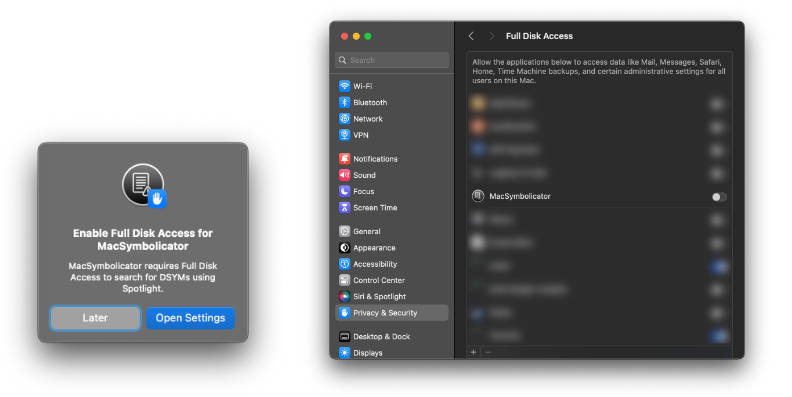Upsurge
Upsurge implements multi-dimensional data structures and operations. It brings numpy-like operations to Swift.
Upsurge no longer supports DSP and other linear operations, please use Surge for that. Surge and Upsurge play nice together.
Features
- [x] Tensor and tensor slicing:
tensor.asMatrix(1, 1, 0...4, 0...4) - [x] Matrix and matrix operations:
let result = A * B′ - [x] ValueArrays with explicit copying and numeric operators:
let result = A • B
Installation
Upsurge supports both CocoaPods (pod 'Upsurge') and Carthage (github "aleph7/Upsurge"). For macOS apps you can use the Swift Package Manager to install Upsurge by adding the proper description to your Package.swift file:
import PackageDescription
let package = Package(
name: "YOUR_PROJECT_NAME",
targets: [],
dependencies: [
.Package(url: "https://github.com/aleph7/Upsurge.git", Version(0,8,.max)),
]
)
Usage
Arrays and vector operations
All of Upsurge's linear (1-dimensional) operations can be performed on anything that conforms to LinearType. Swift's built-in arrays and array slices conform to LinearType, of course. But Upsurge also defines the ValueArray class to store a one-dimensional collection of values. ValueArray is very similar to Swift's Array but it is optimized to reduce unnecessary memory allocation. These are the most important differences:
- Its instances have a fixed size defined on creation. When you create a
ValueArrayyou can define a capacityvar a = ValueArray<Double>(capacity: 100)and then append elements up to that capacity. Or you can create it with specific elementsvar a: ValueArray = [1.0, 2.0, 3.0]but then you can't add any more elements after. - It is a class. That means that creating a new variable will only create a reference and modifying the reference will also modify the original. For instance doing
var a: ValueArray = [1, 2, 3]; var b = aand thenb[0] = 5will result inabeing[5, 2, 3]. If you want to create a copy you need to dovar b = ValueArray(a)orvar b = a.copy(). - You can create an uninitialized
ValueArrayby doingvar a = ValueArray<Double>(capacity: n)orvar a = ValueArray<Doube>(count: n). This is good for when you are going to fill up the array yourself. But you can also usevar a = ValueArray(count: n, repeatedValue: 0.0)if you do want to initialize all the values.
Creating arrays
Create a ValueArray with specific literal elements when you know ahead of time what the contents are, and you don't need to add more elements at a later time:
let a: ValueArray = [1.0, 3.0, 5.0, 7.0]
Create a ValueArray with a capacity and then fill it in when you are loading the contents from an external source or have a very large array:
let a = ValueArray<Double>(capacity: 100)
for v in intputSource {
a.append(v)
}
Finally there is a way of initializing both the capacity and the count of a ValueArray. You should rarely need this but it's there for when you are doing operations on existing arrays using low-level APIs that take pointers:
func operation(a: ValueArray<Double>) {
let N = a.count
let b = ValueArray<Double>(count: N)
// ...
}
Vector arithmetic
You can perform operations on ValueArray in an intuitive manner:
let a: ValueArray = [1.0, 3.0, 5.0, 7.0]
let b: ValueArray = [2.0, 4.0, 6.0, 8.0]
let addition = a + b // [3.0, 7.0, 11.0, 15.0]
let product = a • b // 100.0
Matrix operations
import Upsurge
let A = Matrix<Double>([
[1, 1],
[1, -1]
])
let C = Matrix<Double>([
[3],
[1]
])
// find B such that A*B=C
let B = inv(A) * C // [2.0, 1.0]′
// Verify result
let r = A*B - C // zero
Tiling
A block Matrix can be formed by repeating a 1-D ValueArray or 2-D Matrix mxn times.
import Upsurge
let a = ValueArray = [1.0, 2.0]
// Tile source array 2 times in each directon,
// returning a 2X4 block matrix
let A = a.tile(2, 2)
let B = Matrix<Double>([
[1.0, 2.0],
[3.0, 4.0]
)]
// Tile source matrix 2 times in each directon,
// returning a 4x4 block matrix
let r = B.tile(2, 2)
Tensors
The Tensor class makes it easy to manipulate multi-dimensional data. You can easily slice or flatten a tensor to get matrices and vectors that you can operate on.
License
Upsurge is available under the MIT license. See the LICENSE file for more info.

